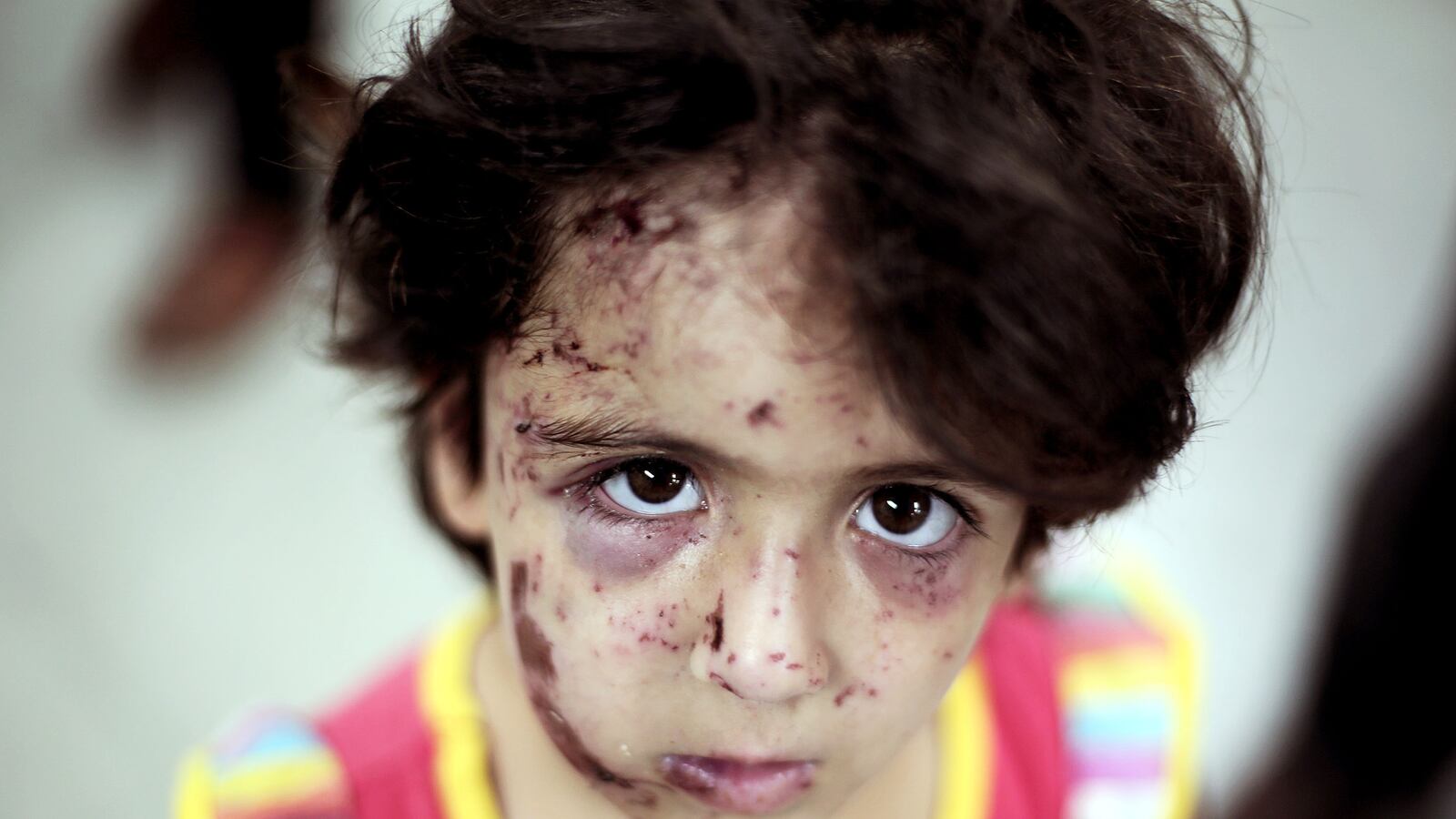War is terrible for children. Saying so is to make a statement so obvious as to defy the need for citation.
Nothing arrests the attention of the public as much as images of dead or injured children from a warzone. For those who escape direct physical injury, there remain the ill effects of displacement and deprivation. The picture of a small child drinking from a juice box as her weeping mother holds her after narrowly escaping militant attack conveys in a uniquely powerful way the nightmarish circumstances of their rescue.
Beyond the physical effects of armed conflict, children can suffer lingering psychological damage as well. From Cambodia to Bosnia to Afghanistan, the negative effects on children’s mental health caused by the experience of war are well documented. In some cases, these effects can last for decades.
A study published this year in the Arab Journal of Psychiatry [PDF, study begins on page 76] about the effects of Israeli-Palestinian warfare on the mental health of adolescents living in Gaza remains depressingly timely. Though the study was conducted shortly after the Israeli military campaign against Hamas [PDF] in late 2008-early 2009, its findings shed light on the ways the present strife may have a lingering impact on the mental health of children and adolescents living in the region.
The study surveyed a randomly selected group of 358 adolescents from 10 schools in the Gaza Strip in the months following the end of the conflict. Subjects were asked about the experiences of various different traumas, and their symptoms of anxiety and post-traumatic stress disorder (PTSD) were assessed, along with the coping mechanisms they may have employed to deal with their distress. Participants described experiences ranging from seeing mutilated bodies on television or hearing fighter jets overhead to being arrested, shot, or injured when their homes were bombarded.
Unsurprisingly, many respondents described symptoms of either partial (34.3 percent) or full PTSD (29.8 percent). Girls were more likely to report anxiety or PTSD symptoms than boys, though both genders seemed to employ coping mechanisms to equal degrees. Hearing artillery or jets, being forced to leave home, and learning of the arrest of someone they knew all contributed significantly to developing anxiety, with the latter two events also significantly associated with developing PTSD.
Looking at the list of different traumatic events the study authors asked about, one jumped out at me. Somewhere between 24.3 and 24.9 percent of participants (there appears to be a slight discrepancy within the study) reported being “Threatened to death when being used as human shield to arrest neighbors [sic]” in response to the survey. (There are minor syntactic errors throughout the study, presumably due to translation.) The article itself stipulates that “the army” used the teenagers as human shields when arresting neighbors. Though it is not stated explicitly, one might reasonably conclude that it is the Israeli army being described.
Using anyone, particularly adolescents, as human shields during a military operation is a uniquely grave charge, even if made obliquely. The study authors did not write their own survey, but used one developed by the Gaza Community Mental Health Program to “assess level of trauma exposure typical for the Palestinian population in Gaza.” It should go without saying that an accurate report of actual events is a necessary part of any good study. However, given that the ongoing conflict between Israel and Hamas is among the most fraught topics on the planet, that small detail is likely to cause readers with ideological biases in either direction to come to very different conclusions about the study’s findings.
Potentially inflammatory data points notwithstanding, the study presents otherwise unsurprising information. That living in a warzone would have persistent negative effects on the mental health of anyone, let alone young people, is a finding that common sense would dictate. However, as a tenuous cease-fire between Israel and Hamas appears to be holding up for now, it is important to be aware not only of the lives lost and property destroyed by the recent violence, but also the long-term impact on the psychological wellbeing of those who experienced it. As this report shows, the damage to the children living there may linger long after the homes are rebuilt and the physical wounds heal.






